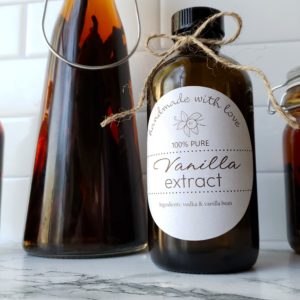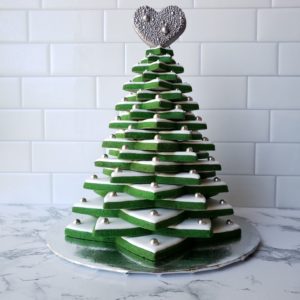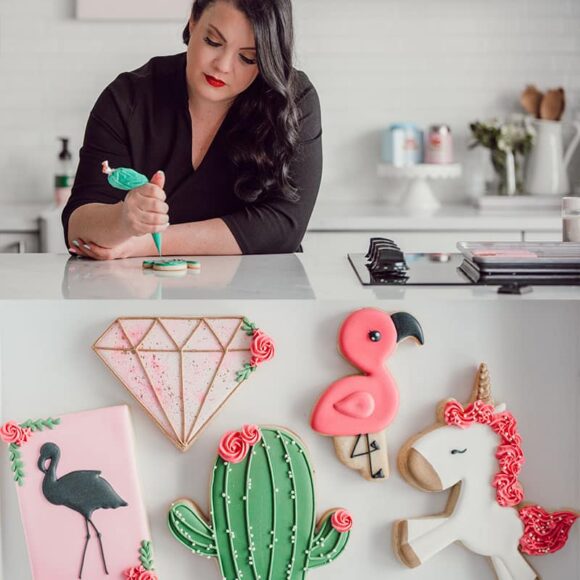
What is Vanilla?
Vanilla is actually a member of the orchid family, and the only edible fruit in the entire orchid family. These orchids produce pods, that we refer to as vanilla beans, and are filled with thousands of seeds. Those seeds can be collected, and are referred to as vanilla caviar. If you’ve ever had vanilla bean ice cream, those little black specks are the vanilla pod seeds.
Different Types of Vanilla
I’m going to try not to bore you, and give you the Cliff’s Notes version of the different types of vanilla.
Vanilla Species
There are two main species of vanilla orchid cultivated for commercial use. Vanilla Planifolia, the most common type, is a more potent vanilla variety with a deep, earthy, vanillin flavor. Vanilla Tahitensis, named after the islands upon which it is cultivated, is more subtle, sweet, and floral. Vanilla Tahitensis is the vanilla most commonly used in fragrances, due to its floral aroma.
Vanilla Bean Regions
Vanilla grows best 15 ½ degrees north and south of the equator, but only in humid environments. The vast majority of commercially cultivated vanilla is grown in five regions: Mexico, Indonesia, Tahiti, Madagascar, and Uganda.
- Mexican Vanilla Beans have a smooth, creamy, and spicy warm flavor.
- Indonesian Vanilla Beans have a deep smokey flavor due to the unique curing process used in the region.
- Tahitian Vanilla Beans are delicate and sweet with floral undertones.
- Madagascar Vanilla Beans, also referred to as Bourbon vanilla beans, are creamy and rich in flavor.
- Ugandan Vanilla Beans have a buttery vanillin flavor, and chocolaty aroma.
Vanilla Bean Grades
There are two primary grades of vanilla beans, Grade A and Grade B.
Grade A Vanilla Beans
Grade A vanilla beans are referred to as gourmet or premium vanilla beans. They have a high moisture content than Grade B beans, which allows the vanilla flavor to quickly infuse into a dish. Grade A beans have an oily sheen and are visibly perfect in form. This is typically the grade you want to use for cultivating caviar.
Grade B Vanilla Beans
Grade B vanilla beans have 10-15% less moisture content than Grade A beans, and are often referred to as extract beans, because their primary use is for making vanilla extract. Grade B beans will often have tears, scarring, bruises, are of varying lengths, and might even be scorched by the sun. While these imperfections do not affect the integrity of the vanillin flavor, their appearance does make them less desirable. Their low moisture content means these beans have a more concentrated flavor, making them the perfect choice for extracts.
Why are Vanilla Beans So Expensive?
Vanilla is the most labor intensive crop in the world, and the second most expensive, after saffron. Vanilla orchids are difficult to grow and keep alive, need to be hand pollinated, and can only grow in very specific climates. It takes 1 ½ to 3 years for the plants to flower and produce pods. The beans must then remain on the vines for 9 months. They are then harvested by hand, and have to go through a curing, drying, and resting period, which takes another 3-5 months. Climate change and political turmoil have also impacted cultivation in recent years.
How to Make Vanilla Extract

Equipment and Ingredients needed:
- 80 Proof Alcohol: I use vodka, because of it’s neutral flavor, but you can also use whiskey or rum. Just know that whatever alcohol you use will impart flavor into your vanilla extract. You don’t want to use the cheapest vodka, but you don’t need to splurge on the top shelf stuff either. Grab yourself a bottle of reasonably priced, middle shelf, vodka.
- Vanilla Beans: Grade B beans are specifically sold as extract beans and are primarily used for that purpose. Grade B beans are also less expensive than Grade A beans. What I do is buy Grade A, extract the caviar to use in baked good, and then toss the empty pod into some vodka. There will still be enough flavor in the beans to make extract, it will just take more time, or an extra bean or two. The ratio you want to use is 6 beans for every 8 oz of alcohol.

- Glass Jar or Bottle: If you’re making extract for yourself, you can use any kind of glass jar or bottle that has a tight seal. As a recipe blogger, I was legally obligated to purchase cute bottles for pictures, but a cleaned pickle jar or salad dressing bottle will work just fine. If you’re making extract for gifts, I love these Boston Round Glass Bottles. They’re the perfect size to make 8 ounces, are dark colored to protect the extract from light, and I just like that they have an old-timey apothecary look.
As an Amazon Associate I earn from qualifying purchases.

- Sharp Knife or Scissors: You just need to split the beans down the center to expose the seeds. You don’t need to completely cut the beans in half lengthwise, but you can. If your beans are too long for your jar, just trim them shorter.
- Funnel: If you have a bottle with a smaller neck, a funnel makes it much easier to fill.
- Measuring Cup: If your bottle is a specific size, you don’t need to measure your vodka. If you have an 8 oz bottle, stick 6 beans in, and fill with vodka. The bottle I used in the picture was just over 2 cups, so I used 13 beans.
- Time: I suggest waiting AT LEAST 3 months before using your extract. But I typically give it 6 months to a year. Homemade extract will last for years, as long as the beans are submerged in alcohol. If you are giving extract as a gift, and it won’t be ready in time, just add a label or tag letting the recipient know when they can use it.


I made some labels that you can download and print if you are giving your vanilla extract as gifts. I used 3″ labels from Online Labels, and I love their products because they are affordable and they have an online label design program that is very user friendly.
I made a label with a clear background, if you wanted to print on colored labels, and one with a darker tan background.

As an Amazon Associate I earn from qualifying purchases.

Homemade Vanilla Extract
Equipment
- 8 oz jar
- knife or scissors
- funnel
Ingredients
- 1 cup 80 proof vodka
- 6 vanilla bean pods
- 3-12 months
Instructions
- Using a sharp knife or scissors, cut beans down center to expose vanilla bean caviar. If beans are too tall to fit in bottle, cut them into smaller pieces.
- Cover beans with vodka. Use a funnel if your jar has a thin neck.
- Store vanilla at room temperature out of direct sunlight. Give bottle a shake every week or so.
- Wait at least 3 months before using your extract. Vanilla will be even better after 6-12 months.
Notes
- Homemade vanilla will last for years as long as the beans are fully submerged in vodka.
- As you use your vanilla extract, you can replace the amount you used with fresh vodka. At some point, your vanilla extract will need to be replenished with new beans as it loses potency.
- If giving vanilla extract as a gift, I recommend removing vanilla beans first.
- If your vanilla extract isn’t quite ready to use when you gift it, leave the beans, and you can add a label or tag with a “do not open until _____” message, and instructions on removing beans before use.












Tyler, thank you for all the info on vanilla bean.. I am so going to make my own.
I’m so excited. I want to know how it turns out.